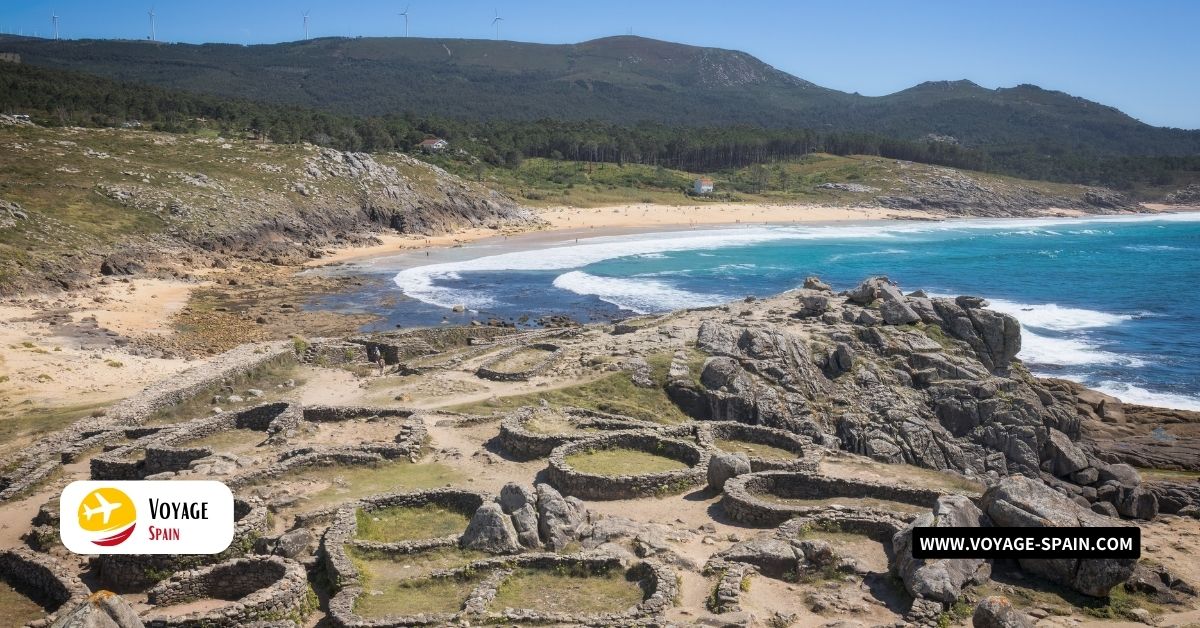Introduction
Ahoy there, fellow adventurers! Today, we embark on a captivating voyage to explore the rich maritime heritage of Cadiz, a sun-drenched haven on Spain’s southern coast. This enchanting city, with its storied past entwined with the rhythm of the ocean, has rightfully earned its place as a maritime gem.
Now, let’s plunge into the depths of one of Cadiz’s oldest and most cherished traditions: the art of traditional tuna fishing. Through generations, these waters have witnessed the continuation of a time-honored practice, where the capture of these majestic creatures unfolds using methods passed down through the ages. It’s a ritual steeped in history and folklore, luring both locals and eager visitors to the shores in anticipation of the annual tuna season.
Historical Background
Let’s embark on a voyage through time to uncover the fascinating history of traditional tuna fishing in Cadiz. Dating back centuries, this age-old practice has woven itself into the very fabric of the region’s maritime heritage, leaving an indelible mark on its cultural landscape.
The origins of tuna fishing in Cadiz trace back to ancient times, where early settlers relied on the bounty of the sea for sustenance and livelihood. Over the centuries, the practice evolved, with fishermen honing their skills and refining their techniques to navigate the challenging waters of the Atlantic Ocean.
Beyond its practical significance, traditional tuna fishing holds deep cultural significance for the people of Cadiz, serving as a source of pride and identity for coastal communities. Passed down from generation to generation, this time-honored tradition is not just a means of survival but a symbol of resilience and tradition in the face of modernization.
Traditional Techniques
Ahoy, fellow sea enthusiasts! Today, we’re diving deep into the world of traditional tuna fishing and uncovering the secrets behind the time-tested techniques that have sustained generations of fishermen in Cadiz. So grab your sea legs and let’s explore!
Netting the Catch
Traditional tuna fishing relies on a variety of methods, including the use of nets and traps strategically placed along the migratory routes of the mighty tuna. These nets, meticulously crafted from natural fibers, are designed to ensnare the prized catch while minimizing harm to other marine life.
The Almadraba System
At the heart of traditional tuna fishing lies the almadraba system—a sophisticated network of nets and pens deployed offshore to corral and harvest tuna during their seasonal migration. This ancient technique, dating back to Phoenician times, harnesses the natural instincts of the tuna, guiding them into a labyrinth of nets where they are carefully harvested by skilled fishermen.
Craftsmanship at Sea
Building and maintaining fishing gear is an art form unto itself, requiring a keen eye for detail and a deep understanding of the sea. From handcrafted wooden boats to intricately woven nets, every aspect of traditional tuna fishing reflects the craftsmanship and ingenuity of generations past. It’s a labor of love that ensures the sustainability of this time-honored tradition for years to come.
The Tuna Fishing Season
Ahoy, tuna aficionados! Get ready to reel in some insight into Cadiz’s annual tuna fishing season. Each year, as the waters of the Atlantic Ocean begin to warm, fishermen eagerly await the arrival of the tuna migration to the shores of Cadiz. This marks the start of a bustling season filled with anticipation and excitement.
Several factors influence the timing and duration of the tuna fishing season in Cadiz.
When and where you can see tuna depend on a number of factors. These include the strength of ocean currents, the temperature of the water, and the availability of food. Furthermore, local fishermen use information that has been passed down through many generations to determine the best times to cast their nets.
As the season kicks off, rituals and traditions abound in coastal communities across Cadiz. From solemn blessings of the sea to lively celebrations honoring the start of the fishing season, these rituals serve as a testament to the deep-rooted connection between the people of Cadiz and the sea. And when the season draws to a close, fishermen gather once more to pay tribute to the ocean and give thanks for another successful harvest.
Community Involvement
Welcome ashore, fellow sea lovers! Let’s dive into the tight-knit world of community involvement in traditional tuna fishing in Cadiz. Here’s a peek into how this ancient practice brings people together like the waves to the shore.
A Community Affair
Traditional tuna fishing isn’t just a job; it’s a way of life that involves the whole community. From seasoned fishermen to eager apprentices, everyone plays a vital role in the process, fostering a sense of camaraderie and shared purpose.
Family Ties
For many local fishermen, tuna fishing is a family affair passed down through generations. Children learn the ropes from their elders, instilling a sense of pride and tradition that runs deep in their veins.
Strengthening Bonds
The impact of traditional tuna fishing extends beyond the catch, weaving its way into the very fabric of coastal communities. Through shared experiences on the open sea and celebrations on land, this age-old practice fosters social cohesion and strengthens the ties that bind.
Environmental Sustainability
Ahoy, eco-warriors! Let’s navigate the waters of environmental sustainability in traditional tuna fishing. It’s all about finding that delicate balance between preserving age-old traditions and protecting our precious marine ecosystems.
Tradition Meets Conservation
Tuna fishing has coexisted with nature for millennia, but as our oceans become more threatened, balancing tradition and conservation is crucial. It’s a delicate dance that involves careful consideration of our environmental impact while honoring generations of legacy.
Sustainable Solutions
In the face of mounting environmental challenges, efforts are underway to ensure that tuna fishing remains sustainable for future generations. From implementing catch limits and seasonal closures to promoting responsible fishing techniques, fishermen and conservationists are working hand in hand to safeguard the health of our oceans and the longevity of this cherished tradition.
Modern Challenges
Despite these efforts, modern fishing techniques and environmental degradation pose significant challenges to the sustainability of tuna fishing. Traditional fishing traditions are threatened by overfishing, habitat damage, and pollution, which affect marine ecosystems. It urges us to work together to protect our oceans for future generations.
Economic Significance
Hey there, savvy sailors! Let’s take a closer look at the economic significance of traditional tuna fishing in Cadiz. It’s not just about reeling in the big catch—it’s about the ripple effect it has on the local economy.
Economic Backbone
Traditional tuna fishing isn’t just a pastime; it’s a powerhouse of economic activity for the region. From supporting local businesses that supply fishing gear to fueling the seafood industry, tuna fishing pumps vital funds into the economy, creating jobs and driving growth.
For many coastal communities in Cadiz, traditional tuna fishing isn’t just a job; it’s a way of life. The industry provides a steady source of income for fishermen and their families, supporting livelihoods and sustaining generations of maritime traditions.
Casting a Tourism Net
Beyond its economic impact, traditional tuna fishing holds untapped potential for sustainable tourism. Visitors flock to Cadiz to witness the age-old spectacle of tuna fishing firsthand, creating opportunities for local businesses to capitalize on the growing interest in authentic maritime experiences. It’s a win-win for the local economy and for travelers seeking an authentic taste of coastal life.
Cultural Heritage Preservation
Ahoy, culture enthusiasts! Let’s dive into the efforts to preserve Cadiz’s rich maritime heritage. From grassroots initiatives to government-backed programs, a wave of action is sweeping across the region to safeguard these cherished traditions for future generations.
Anchoring Tradition
Cadiz’s marine legacy is being preserved through fishing vessel restoration and maritime museum creation. These efforts give visitors and locals faith that generations-old stories will live on.
Spreading the Word
Education and awareness play a crucial role in safeguarding traditional practices. By sharing the history and significance of Cadiz’s maritime heritage through workshops, festivals, and educational programs, we can inspire future generations to take pride in their cultural legacy and become stewards of the sea.
All Hands on Deck
Collaboration is key to preserving Cadiz’s maritime heritage. By fostering partnerships between local authorities, fishermen, and conservationists, we can harness the collective wisdom and resources needed to navigate the challenges of modernization while staying true to our roots. Together, we can ensure that Cadiz’s maritime heritage remains a source of pride and inspiration for years to come.
Future Prospects
The future holds both possibilities and threats for the continuation of conventional tuna fishing. Nevertheless, advances in environmentally friendly fishing methods and increasing public awareness of conservation activities offer hope. We must overcome commercial fishing and environmental degradation to preserve this valued culture.
To secure the legacy of traditional tuna fishing for future generations, adaptive strategies are paramount. Sustainable techniques, stakeholder participation, and education and awareness can help us overcome the challenges ahead and preserve Cadiz’s tuna fishing legacy.
Conclusion
As we conclude our tour of Cadiz’s traditional tuna fishing, it is evident that coastal communities have a deep love for this practice. Tuna fishing not only holds cultural significance but also plays a vital role in the local economy, creating a connection between generations past and present.
However, our work is far from over. Now, it’s time to rally together and ensure that traditional tuna fishing remains a thriving part of Cadiz’s cultural heritage. Whether it’s supporting sustainable practices, sharing stories and knowledge, or advocating for conservation efforts, each of us has a role to play in preserving and promoting this cherished tradition.
FAQs
Q1: What Is The 3000 Year Old Traditional Practice Of Catching Bluefin Tuna Called In Spain?
The 3000-year-old traditional practice of catching bluefin tuna in Spain is called “almadraba.”
Q2: What Kind Of Tuna Is In Spain?
Bluefin tuna is the most common type of tuna found in Spain.
Q3: What Is Tuna Called In Spain?
Tuna is called “atún” in Spain.
Q4: What Kind Of Tuna Is Caught In Spain?
Various species of tuna are caught in Spain, including bluefin tuna, yellowfin tuna, and albacore tuna.
Q5: Is Tuna Popular In Spain?
Yes, tuna is popular in Spain, where it is enjoyed in a variety of dishes such as tapas, salads, and traditional Spanish stews.
Q6: What Culture Is Tuna From?
Tuna is not associated with a specific culture, as it is consumed and caught in various regions around the world. However, it has historical significance in Mediterranean cultures like Spain, Italy, and Greece.












